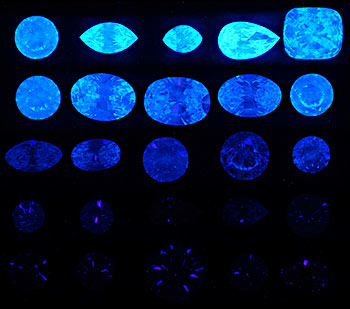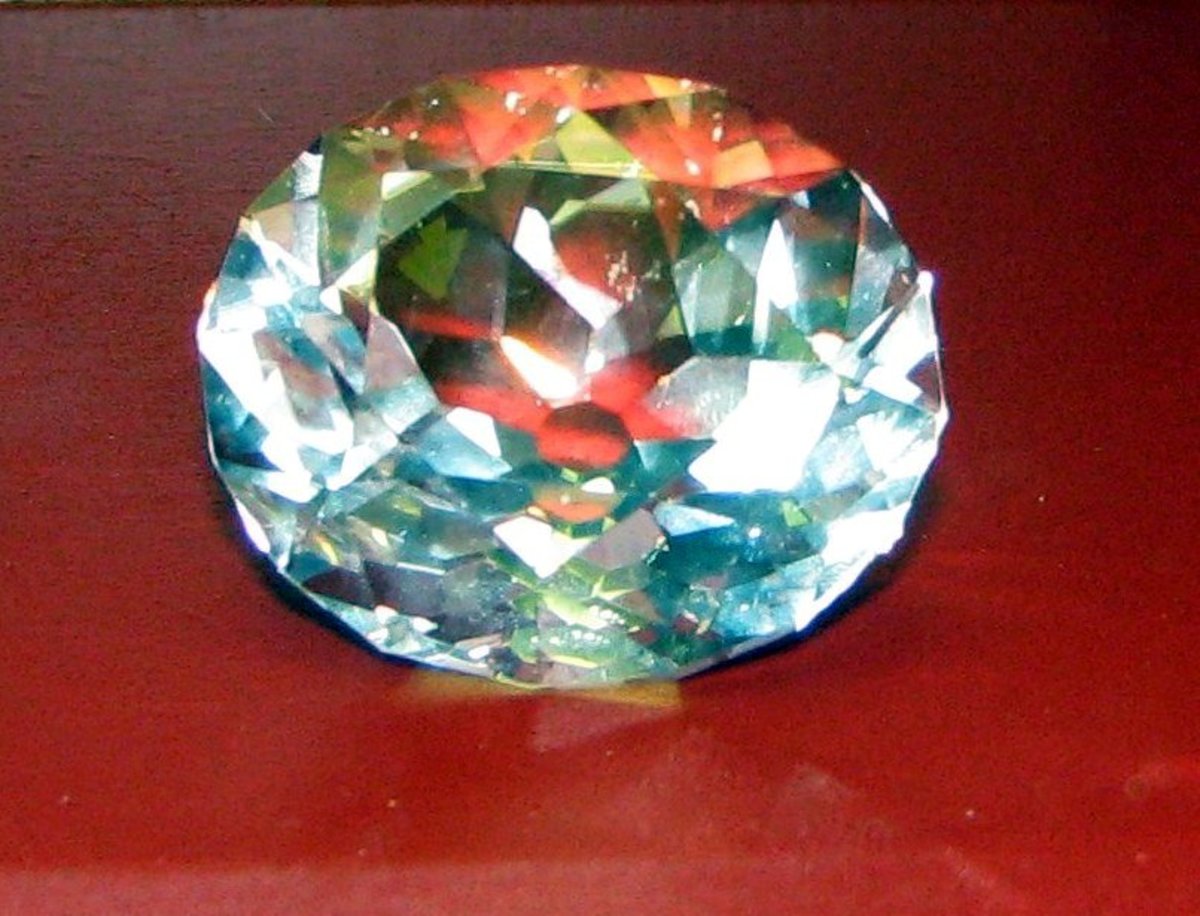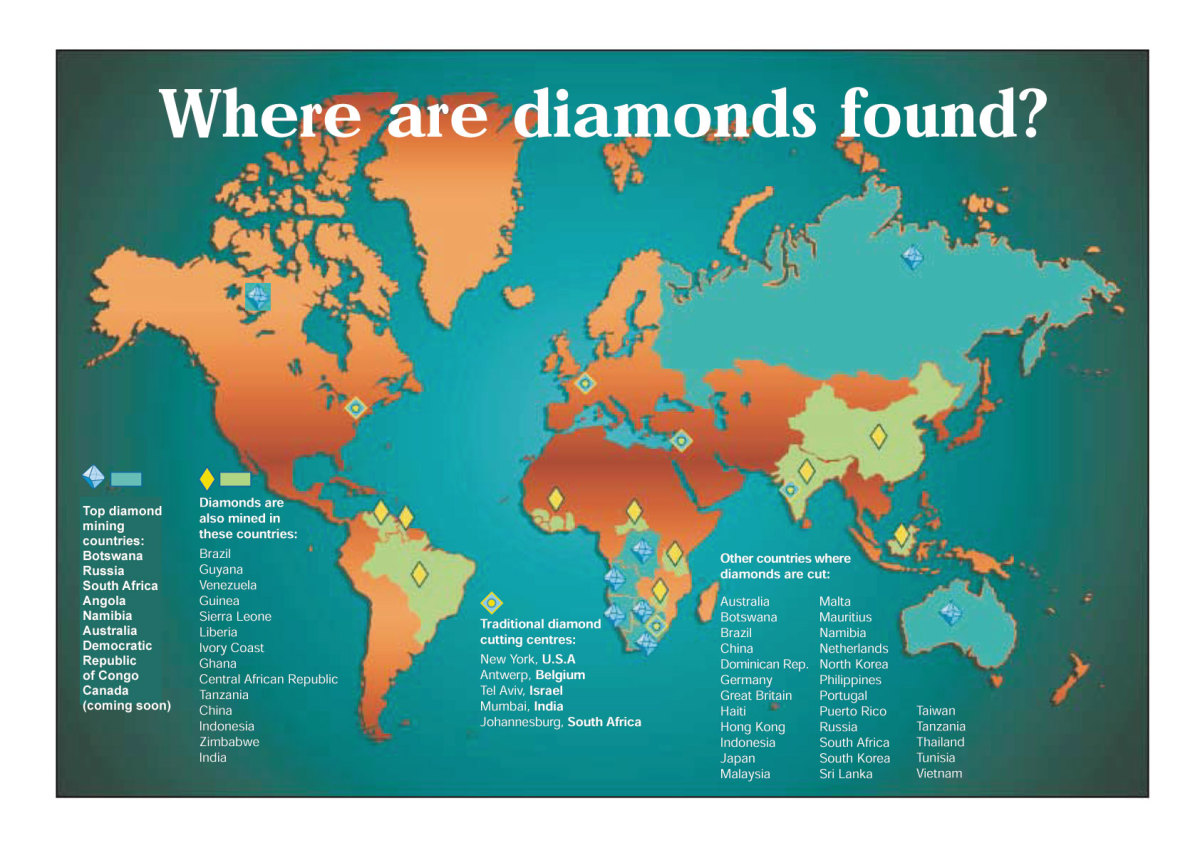What is Diamond Fluorescence?
Diamond Flourescence Under Ultra-Violet Light

What is Diamond Flourescence? Explained
The first question you might be asking yourself is: 'what is diamond fluorescence?' The fluorescence of a diamond refers to a coloring it displays under Ultra-Violet light. While this may not seem important unless you live your life in a night-club or on a Disneyland ride, it can have an effect on the performance, color, and price of your diamond. The levels can range from 'Faint' to 'Moderate', and all the way up to 'Extreme.' Depending on the level, FL has the ability to add AND detract from the quality, look, and price of a diamond.
Fluorescence in a diamond is considered a positive attribute when it is at the level of faint to medium. Due to fluorescence primarily being blue, which is a complimentary color to yellow (the color white diamonds progress to in a color chart), flourescence has the ability to improve the color of a diamond by a whole grade or two. Due to this naturally occurring phenomenon, the diamond market greatly discounts stones with faint to moderate fluorescence, up to 20% despite the fact that it is unnoticeable in regular light.
On the opposite side of the spectrum, fluorescence is considered a negative attribute when it is at the level of distinct, strong, or extreme. The reason for this is because with levels that high, it can make the diamond look oily or hazy and affect it's light performance. In daylight, the stone may look considerably duller and lose the strong white color you want in a diamond. For those on a tight budget, this can become even more desirable as prices for these diamonds are marked down an average of 25%.
The arguments for and against fluorescence continues to rage on. The evidence for both sides is clear and the conclusion is that fluorescence is both a good and a bad attribute, depending on how you look at it. What makes the argument even more intriguing is that fluorescence is very rare, so it may seem odd that having something so rare can actually diminish the price of the diamond. Be thoughtful when buying your diamond and have the fluorescence determined before making the next big purchase.








